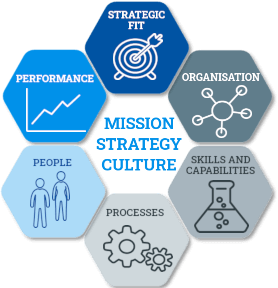Treat product cost reduction like new product development and boost your savings
Dealing with rising commodity and energy prices are high on the priority list for many companies, (not to mention consumers). When your customers are looking less for new products and more for lower prices, why not focus your innovation expertise on delivering product savings?
In tough times, put your innovation skills to work delivering savings
Making ongoing changes to cost-reduce products should be part of the DNA of your company already. Usually these changes are not visible to customers or consumers and are managed at an operational level as part of “business as usual”. But when this approach is not enough, what do you do?
It’s likely you will need to dig deeper, try more fundamental changes and perhaps work with customers to cost-reduce and cost-optimise existing products. As you do this, you will need to involve more parts of your company and co-ordinate a wider range of activities; all the while managing the risks inherent in modifying existing products.
Whether you are creating new products, or reducing the costs of existing products, you face the same challenges of development and commercialization and because of this, the same tools, techniques and mindsets that improve innovation delivery can also boost your savings programme.
In this article I use the Six Dimensions Framework to walk you through the key things you need.
The Six Dimensions Framework & Cost Reduction
The Six Dimensions is a holistic framework of key success factors for boosting innovation delivery and these same dimensions are also key to reducing product costs.
Find out more about the Six Dimensions Framework here.

To understand how the Six Dimensions help deliver savings, let’s look at each in turn.
STRATEGIC FIT
Your company needs to have a clear strategic rationale for your product cost-reduction programme. Is it aimed at short term pain relief or will it become part of a longer-term approach? It should be clear to all what is in scope (and what is not). The expected results should be defined and the priority of product cost reduction compared to everything else the company needs to deliver should also be clear.
PERFORMANCE
Most companies measure realised savings vs pre-defined targets. It makes sense, the bottom line is where you expect to see the results but KPIs like this have the drawback that they are lagging. They measure the results of past actions. As with product creation, you should also consider adding well-designed leading KPIs – those that give an indication of potential future delivery. You can find out more about KPI design in one of my previous articles here.

ORGANISATION
After the easy wins have been delivered, it’s likely that savings projects will become more complicated. They will start to need resource from across the whole company – probably organised in cross-functional project teams. Sounds familiar? Yes, it’s just like for new product development. People need to be totally clear on their roles and responsibilities, whether it’s the people who do the work, or the people who make decisions on the savings programme overall. I’m not saying the roles and responsibilities defined for NPD can be simply cut and pasted for delivering savings, but they can be used as a starting point and adapted.
PROCESSES
Once the roles and responsibilities are clear and people know “who does what”, the next step is to know when things should be done. This is where you need clear business processes. Whether you’re creating new products or cost-reducing existing ones, clear processes ensure the right projects are attempted, resourced, executed and ultimately delivered efficiently. Here again, tools and techniques used in NPD have a lot to offer product cost reduction.
For product cost-reduction, a specific methodology called “Design-to-Cost” may be particularly relevant. I will not go into details here, but you can find more information in the further reading below.
SKILLS & COMPETENCIES
If you don’t have access to the right skills, you savings programme will not deliver. You therefore need to know what skills you need and often, the skills you need include the ones you need for creating and commercialising new products. Product development, customer and consumer insight, regulatory, procurement, industrial operations, financial… The list goes on.
Because your cost saving programme will compete for the same resources as your NPD programme it makes sense to evaluate your skills needs in the same way for both. More positively, skills gaps for both types of activity could be filled with the same training, outsourcing or partnerships too. The main point here is that if you don’t have access to the right skills, you savings programme will not deliver.








